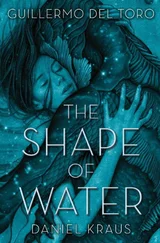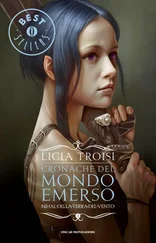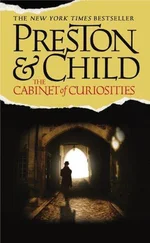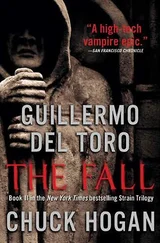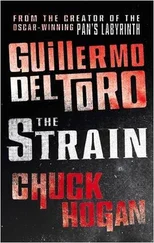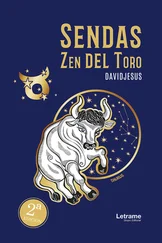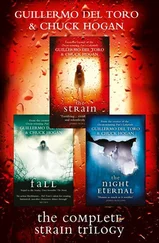At the far end of the Foyer, a winding staircase leads to the second floor. Upstairs are the Screening Room and the Comic Book Library. As we reach the landing, Guillermo points to an image and says, “This is the first concept drawing of Hellboy we ever did.” Next to it are illustrations by classic fantasy illustrator Hannes Bok, an original cel from the landmark 1914 Winsor McCay cartoon Gertie the Dinosaur , and a Ron Cobb design for Aliens , which was given to Guillermo by James Cameron. Continuing the Alien theme is artwork by H. R. Giger.
As in other areas, standing guard is a Thomas Kuebler sculpture from Freaks. This one is a life-size figure of Schlitzie. “This is my favorite, probably, because it usually puts me in a very good mood,” notes Guillermo. “I need to be very grumpy for it not to work.”
Two other notable items are originals of the posters Drew Struzan did for Hellboy and Pan’s Labyrinth , which were released only as limited editions. “The studios didn’t want to use them,” explains Guillermo. “I think Drew is a genius. Such a shame the marketing departments have their own ideas.”
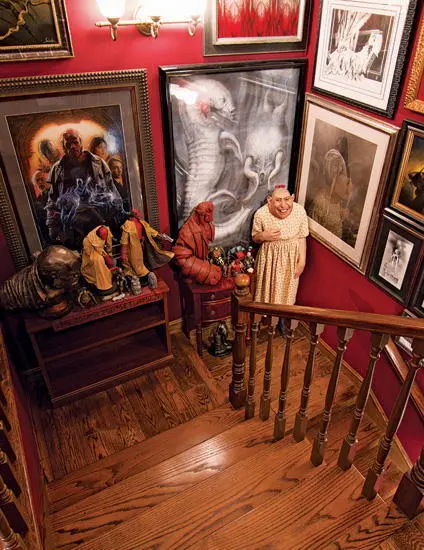
The staircase leading up to the second floor of Bleak House.
Indeed, the primary function of the Screening Room is to watch films, but it is also a shrine to Guillermo’s favorite filmmakers—a place where he can come to study and be inspired by their work. In particular, Hitchcock and Disney, Guillermo’s eternal favorites, vie for wall space: “Everything on the wall is original art from Fantasia, Sleeping Beauty, Alice in Wonderland, The Adventures of Ichabod and Mr. Toad… .”
The books in this room are predominantly biographies and retrospectives of four directors Guillermo holds in the highest esteem—Stanley Kubrick, David Lean, Alfred Hitchcock, and Luis Buñuel. “I also have some texts on Kurosawa,” he elaborates. “What I try to do is, before I watch a movie, I read a little bit about it.”
Guillermo owns film prints of only two movies— Cronos and Brian De Palma’s Phantom of the Paradise —which are housed in their film cans beside a vintage Chinese desk.
An original Virgil Finlay illustration from Weird Tales hangs on the wall alongside Mike Mignola’s first drawing of Abe Sapien for Hellboy. The concept maquette of Mr. Wink from Hellboy II sits side by side with a figurine of the Gill-Man from Creature from the Black Lagoon. “Second-greatest monster ever made,” Guillermo proclaims.
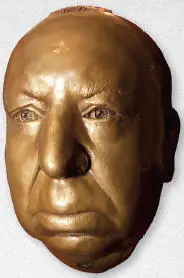
A bronze mask of Alfred Hitchcock hangs in the Screening Room.
Nearby, incongruently, is a figure of Jesus. “It’s a Jesus that was in my house when I was a kid,” Guillermo explains. “It’s a pretty gory Jesus. Pretty brutal, but his face is so serene. This explains a lot.”

A vinyl toy from del Toro’s childhood stands guard over mementos from his past in the Comic Book Library.
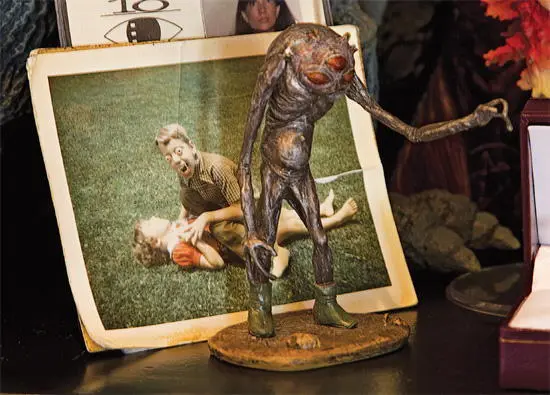
The photo is of del Toro at age nine, pretending to suck blood out of his sister, Susana.
Though he has a library dedicated to them, Guillermo admits, “Every closet in the house has comics.” He’s read all of them, but he tends not to buy publications of recent vintage: “I only buy the new collected editions of Dick Tracy , the Spirit , or Little Lulu. ”
Covering the walls are more originals by Mignola, Corben, Wayne Barlowe, Mike Kaluta, and Gahan Wilson. “The final pages of Alan Moore’s From Hell are over there,” gestures Guillermo. Then he notes, “This is one of the last drawings Charles Doyle did.” Doyle was a popular illustrator who went mad and was sent to a mental institution, where he continued to draw until his death in 1893.
Atop a drawing table rests a strange, furry creature. “It’s a toy from when I was kid,” Guillermo exults. “It’s an action figure of an insect warrior. I started collecting vinyl art long before people were into it. This is a real toy. It’s not a postmodern reflection. Somebody said, ‘This would make a great toy.’”
The backyard shared by the two wings of Bleak House is surprisingly sunny and pleasant, and Guillermo admits he doesn’t work here. “I don’t like the outside. But I like sitting here in the shade, just enjoying the silence.”
In truth, Guillermo wishes he had gnarled trees like those his neighbors down the block have planted. A bit of Victorian topiary would lend a more somber mood to Bleak House’s yard and complement the rest of the decor.
But that’s a dream to be realized another day. For now, the backyard is a serene place where Guillermo can contemplate his next projects in the company of a life-size bronze sculpture of Ray Harryhausen, one of his creative patron saints.
One final question remains: Was this exactly the house he wanted when he was a kid?
“Yes,” Guillermo affirms, “if I ever finish….”
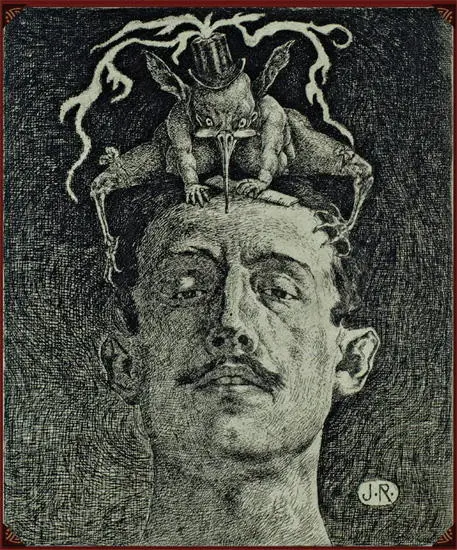
Julio Ruelas’s The Critics (1906), a print of which hangs in the entryway at Bleak House.
MSZ:Your work involves such a melding of influences. Is there a specific fine artist that you might say is your favorite?
GDT:Well, the guy I connect with most viscerally is Francisco Goya because I just find him incredibly powerful.
But I love the symbolists and I love some of the surrealists. Of the symbolists, I love Marcel Schwob, Félicien Rops, Odilon Redon. I was very influenced by Rops. And I love Mexican symbolist artists. I have two original drawings at Bleak House by an artist named Julio Ruelas. He did one of my favorite engravings. I have it right in the entrance. It’s called The Critics , and it is a self-portrait where Ruelas has a parasite with a long beak and a top hat on his head.
Ruelas was really incredible. He was influenced by Arnold Böcklin, who is another favorite of mine, but he was also influenced by Félicien Rops. Ruelas is very lewd, but he’s also very sensual and sort of a necrophiliac. He is a very strange guy. One of his drawings that influenced everything I do is called Profane Pieta , and it’s a crucifixion with the virgin at the foot of the cross. It looks like a really great religious illustration. You can show it to your grandmother, and she’ll go, “Oh, what a beautiful religious painting.”
But then, if you observe carefully, Christ has an erection—the shadow of death has taken him over—and the virgin has one breast out and a snake is suckling or biting her. I learned from this painting that you can make things with one apparent surface meaning and have them work as a symbolist piece that is completely counter, depending on the way you organize the symbols. I was fascinated by that drawing. I discovered it when I was sixteen or seventeen, and it had a big impact on me.
Читать дальше






